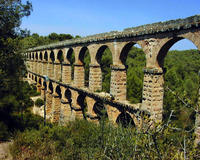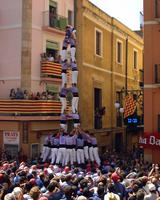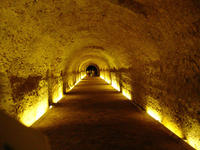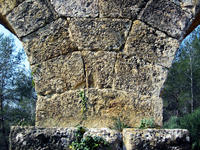You are in: Europe -> Spain -> Archaeological Ensem... , and traditional search or Image Gallery will yield results of this site only
Archaeological Ensemble of Tárraco
| Site number: | 875 |
|
| Type of site: | Cultural | |
| Date: | - | |
| Date of Inscription: | 2000 | |
| Location: | Europe, Spain, Province of Tarragona, Autonomous Community of Catalonia | |
Up to 75 images are shown here. Click on each for more details or on Image Gallery for more images.
| Description: | In Roman Spain, Tárraco (now known as Tarragona) was a foremost administrative and commercial city; it was the Imperial cult’s centre for all the Iberian provinces. A series of brilliant excavations have revealed its past endowment of countless fine buildings, and though the majority of the remains are fragmentary, many were preserved underneath more recent buildings. They impart a vivid illustration of this Roman provincial capital’s grandeur. --WHMNet paraphrase from the description at WHC Site, where additional information is available. | |
| Tarragona is a city located in the south of Catalonia and east of Spain, by the Mediterranean Sea. It is the capital of the catalan comarca Tarragonès. In Roman times, the city was named Tarraco (Ταρρακών in Ptolemy, ii. 6. § 17) and was capital of the province of Hispania Tarraconensis (after being capital of Hispania Citerior in the Republican era). The Roman colony founded at Tarraco had the full name of Colonia Iulia Urbs Triumphalis Tarraco. Some experts suggest that the city was an Iberic town called Kesse or Kosse, derived of the iberic tribe of those region: the cosetians.Smith suggests that the city was probably founded by the Phoenicians, who called it 'Tarchon, which, according to Samuel Bochart, means a citadel. This name was probably derived from its situation on a high rock, between 700 and 800 feet above the sea; whence we find it characterised as arce potens Tarraco. (Auson. Class. Urb. 9; cf. Mart. x. 104.) It was seated on the river Sulcis or Tulcis (modern Francolí), on a bay of the Mare Internum (Mediterranean Sea), between the Pyrenees and the river Iberus (modern Ebro). There are still many important ancient remains at Tarragona. Part of the bases of large Cyclopean walls near the Quartel de Pilatos are thought to be anterior to the Romans. The building just mentioned, a prison in the 19th century, is said to have been the palace of Augustus. But Tarraco, like most other ancient towns which have continued to be inhabited, has been pulled to pieces by its own citizens for the purpose of obtaining building materials. The amphitheatre near the sea-shore has been used as a quarry, and but few vestiges of it now remain. A circus, 1500 feet long, is now built over it, though portions of it are still to be traced. Throughout the town Latin, and even apparently Phoenician, inscriptions on the stones of the houses proclaim the desecration that has been perpetrated. Two ancient monuments, at some little distance from the town, have, however, fared rather better. The first of these is a magnificent aqueduct, which spans a valley about a mile from the gates. It is 700 feet in length, and the loftiest arches, of which there are two tiers, are 96 feet high. The monument on the northwest of the city, and also about a mile distant, is a Roman sepulchre, commonly called the "Tower of the Scipios"; but there is no authority for assuming that they were buried here. (Cf. Ford, Handbook, p. 219, seq.; Florez, Esp. Sagr. xxix. p. 68, seq.; Miñano, Diccion. viii. p. 398.) --Wikipedia. Text is available under the Creative Commons Attribution-ShareAlike License. | ||
| Source: | http://whc.unesco.org/en/list/875 | |
| Reference: | 1. UNESCO World Heritage Center, Site Page. | |











































